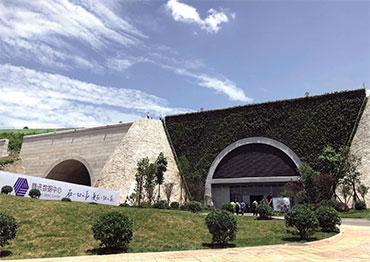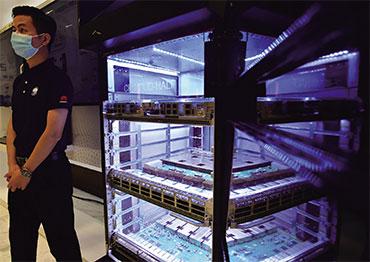Meanwhile, there are concerns about excessive investment in data centers. Many local governments began vying to attract investment from companies years before the national network project’s approval, when authorities included data centers among the seven categories of new infrastructure in 2020.
“Local governments mainly took charge of preparing the business environment, like helping companies get land and electricity. But private companies are the major investors,” said a person engaged in the data center industry.
A 2018 report released by the Data Center Industry Alliance of China shows that 50 percent of data centers in the west were vacant. In some regions, only 10 percent of data centers were online. The report pointed out that local governments and capital drove many projects instead of market demand.
The same happened to data centers in first-tier cities. Research by Kezhi Consulting in 2021 on the internet data center market around Shanghai shows that an average 16.4 percent of computer rooms in the city were vacant in 2020. In some data centers, the rate exceeded 40 percent, showing a severe mismatch of supply and demand.
The Tencent manager told NewsChina that in terms of profitability, data centers are not like internet businesses, which have potential for quick market growth and viability. “But they can also generate steady rental income from good customers, which may bring higher return rates than traditional businesses. This is why so much capital entered the field in recent years,” he said.
Wang Qing, deputy chief engineer with the Industry and Planning Research Institute of China Academy of Information and Communications Technology, complained about the rush to invest in building data centers, noting that many are built without strategic coordination, which can easily cause redundancy and waste.
The NDRC requires a minimum occupancy average of 65 percent for server racks in the 10 data center clusters. “Now the project has started, companies will be more careful when they build data centers to avoid overly scattered distribution. This will help generate economies of scale and reduce costs, which are important considerations behind the project,” the Tencent manager said.
Despite the post-2020 rush to build data centers that are likely behind the oversupply, he said the overall industry remains healthy. “There used to be a supply shortage, after all,” he said.
In analyzing the supply-demand mismatch, Yang Fan distinguished data centers, which collect, store, process and distribute data, from AI computing centers, as the two operate differently.
“Investment [in data centers] is mainly in land, construction and data center racks and climate control equipment. AI computing centers need to purchase servers and AI software and hardware beyond that, and directly provide services to industries... The two models vary a lot in unit economic value added,” Yang said.
He observed local governments now cared more about economic value added per unit of energy consumption brought about by data centers than before. “Previously, construction of industrial park-style data centers was going on everywhere with little thought into attracting high-quality enterprises. That’s how the mismatch occurred,” said Yang, adding that building computing centers requires greater integration capability along industrial chains to serve market demand.
Some local governments already changed their approach, particularly under increasing pressure to reduce energy consumption. Wang Hui, an investment official in a second-tier eastern coastal city, told newspaper the Economic Observer they have no plans to court big data centers this year, as such projects are difficult to get approved now.
Besides energy consumption concerns, the government examined the necessity of data centers for the city when related fields such as the industrial internet and autonomous vehicles are yet to take off, Wang said.
By 2025, direct investment in seven major fields of new infrastructure will total 10 trillion yuan (US$1.6t), predicted the CCID, a research institution under the Ministry of Industry and Information Technology of China.
Unlike traditional infrastructure, new infrastructure hinges on market demand, so enterprises are the primary source of investment. This will require a role change for the government, said Yang Xiaoyi, a senior researcher with BRI Data, a data service provider engaged in infrastructure investment.
“What the government needs to do is stop direct investment and improve the institutional environment, stimulate market demand and clear obstacles hindering relevant industries,” Yang said.
Yang said they hope governments can help figure out their industrial needs to stimulate demand for AI to boost local economic development.

 Old Version
Old Version


